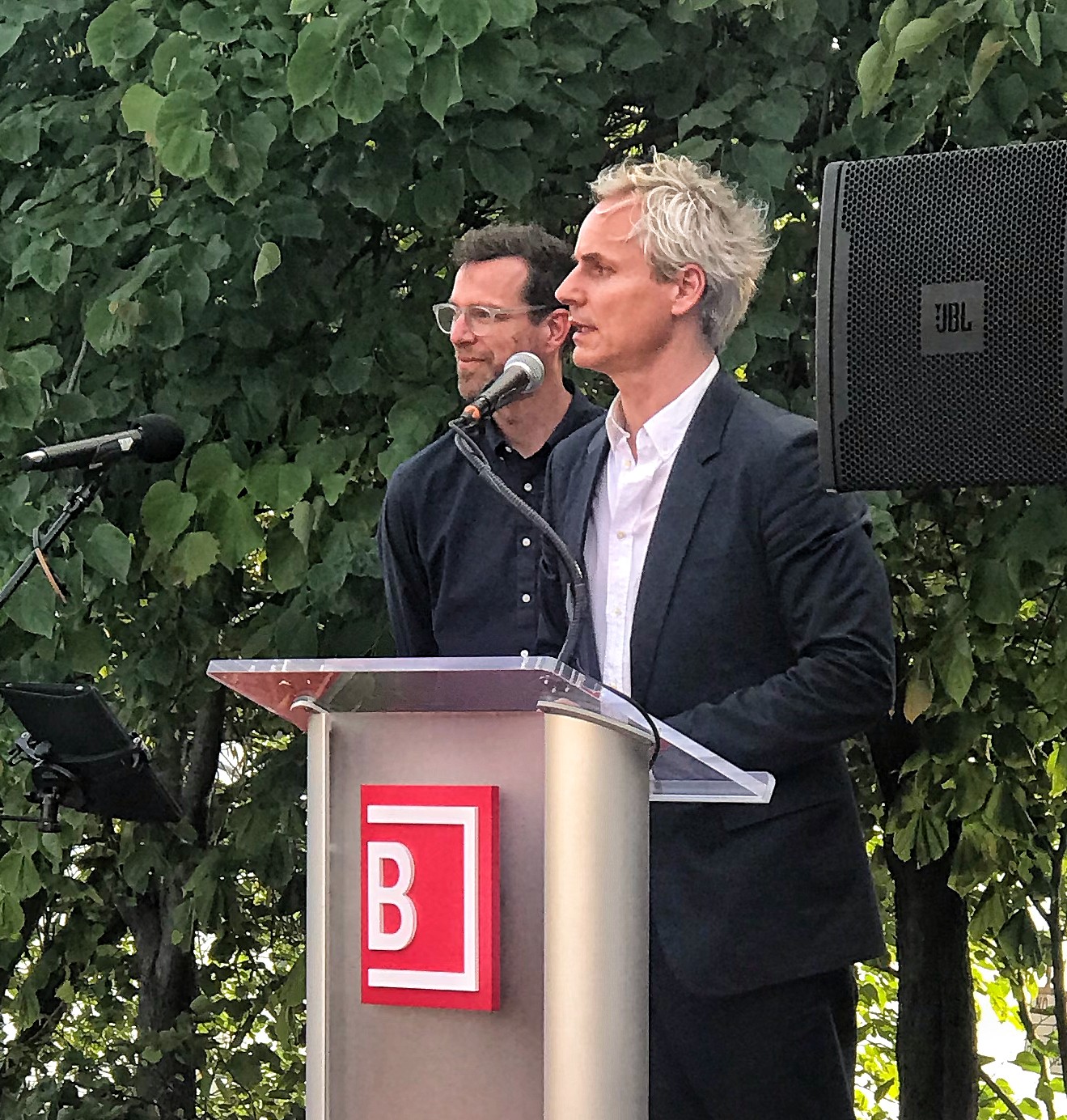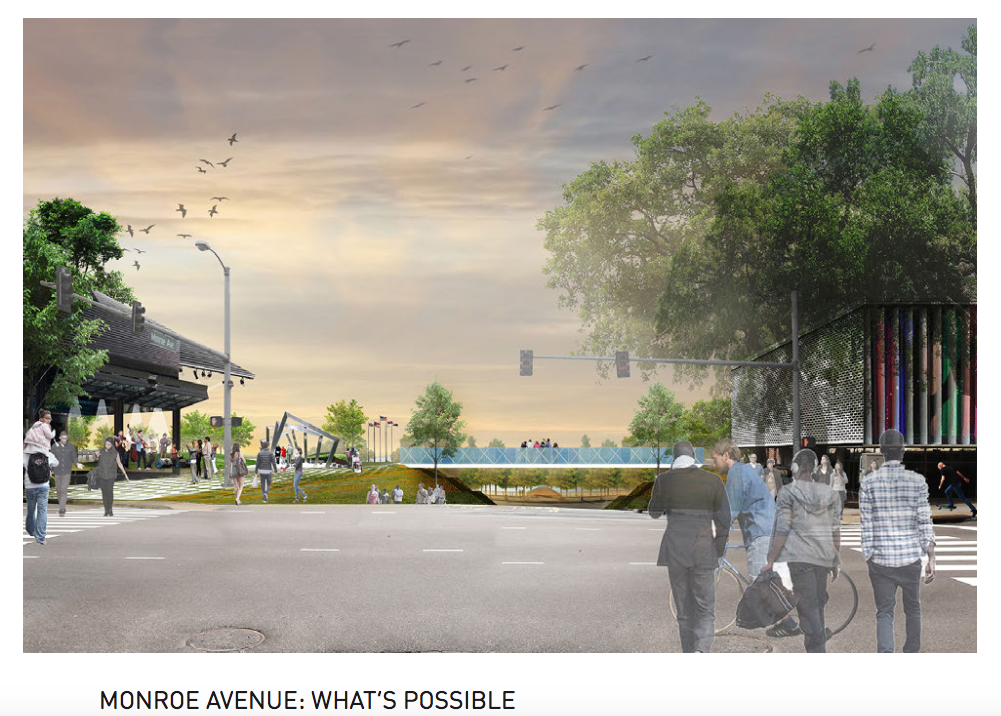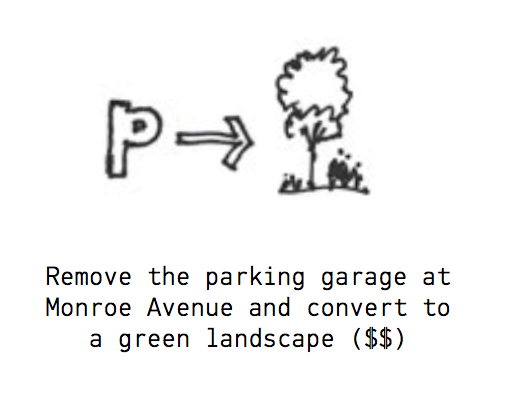
The Memphis Brooks Museum of Art introduced a world renowned design firm as the creative force behind “Brooks on the Bluff,” the future Downtown incarnation of the 103-year-old institution.
Herzog & de Meuron of Basel, Switzerland and New York, will collaborate with Memphis-based archimania, the architect of record. The design is expected to be unveiled early next year and the $105 million facility completed in four to five years.
Herzog & de Meuron has a formidable reputation, having won the Pritzker Architecture Prize for its renovation of London’s Tate Modern in 2000. It also did the striking Bird’s Nest Stadium at the 2008 Beijing Olympics, the Pérez Art Museum Miami, and several other notable projects.
Tuesday evening’s presentation was held at the site of the future museum at Union and Front, which now is a fire station and parking garage.
Deborah Craddock, president of the museum’s board, told the attendees that, “Relocating the Brooks to the Fourth Bluff and along the banks of the Mississippi river is a move that offers an unprecedented opportunity for the art museum to serve as the primary cultural anchor in downtown core of Memphis along a revitalized riverfront.”
She said several planning and engagement sessions have been held since plans for the museum’s move were announced in 2017. “Our goals as an institution perfectly aligned with those indicated in community responses to create a radically welcomed and inclusive art museum for all people,” Craddock says.
The term “radically welcomed” is also being used by Brooks executive director Emily Neff, which indicates a determination to get higher numbers of people through the doors of the museum. Memphis mayor Jim Strickland told the Memphis Flyer that the Brooks sees about 80,000 people a year now, but with the new facility, “We will easily get hundreds of thousands of people a year coming into this great museum.” He says, “The Brooks museum is a good museum; this is going to make it a really great museum. We need a new building, and building it here on the river bluff and building it here downtown is going to be incredible.”
Neff says that one of the appealing aspects of Herzog & de Meuron was that it doesn’t have a signature style. What they do, she says, “is informed by the site and the context of the site and the uniqueness of Memphis and the pride we take in our city and what the architect can say about our city. We thought they were the perfect match. And it helps that they have major experience in the cultural sector and in art museums.” She says that the selection of archimania means there will be an intimate knowledge of Memphis by two firms that are focused on design excellence and collaboration.
Two of the members of the team from the Swiss firm have a local connection. Project manager Philip Schmerbeck went to Germantown High School and got his architecture degree at Mississippi State University. Another team member, Jack Brough, is a graduate of Ridgeway High School.
Ascan Mergenthaler, senior partner and partner in charge, told the gathering, “there’s something about the people of Memphis, a very special spirit about them and we’re very impressed with that. We’re convinced that this building and this place will become the hotspot of Memphis, really like a focal point were people come not only to see art but also to come and just hang out and to enjoy the place, meet people and just make it a truly civic building.”
Mergenthaler says the site intrigued the design firm. “The Bluff, this very interesting nature form formed by the river and with the downtown, and then we have this beautiful slope on the left and the right which is also fantastic. It’s a challenge, but its also an opportunity to create something very specific for this place, so we will come up with something which is really firmly rooted in this and grounded in this, and can only be here and nowhere else in the world.”
 Google Maps
Google Maps  Studio Gang
Studio Gang  Studio Gang
Studio Gang 
 Studio Gang
Studio Gang  Studio Gang
Studio Gang